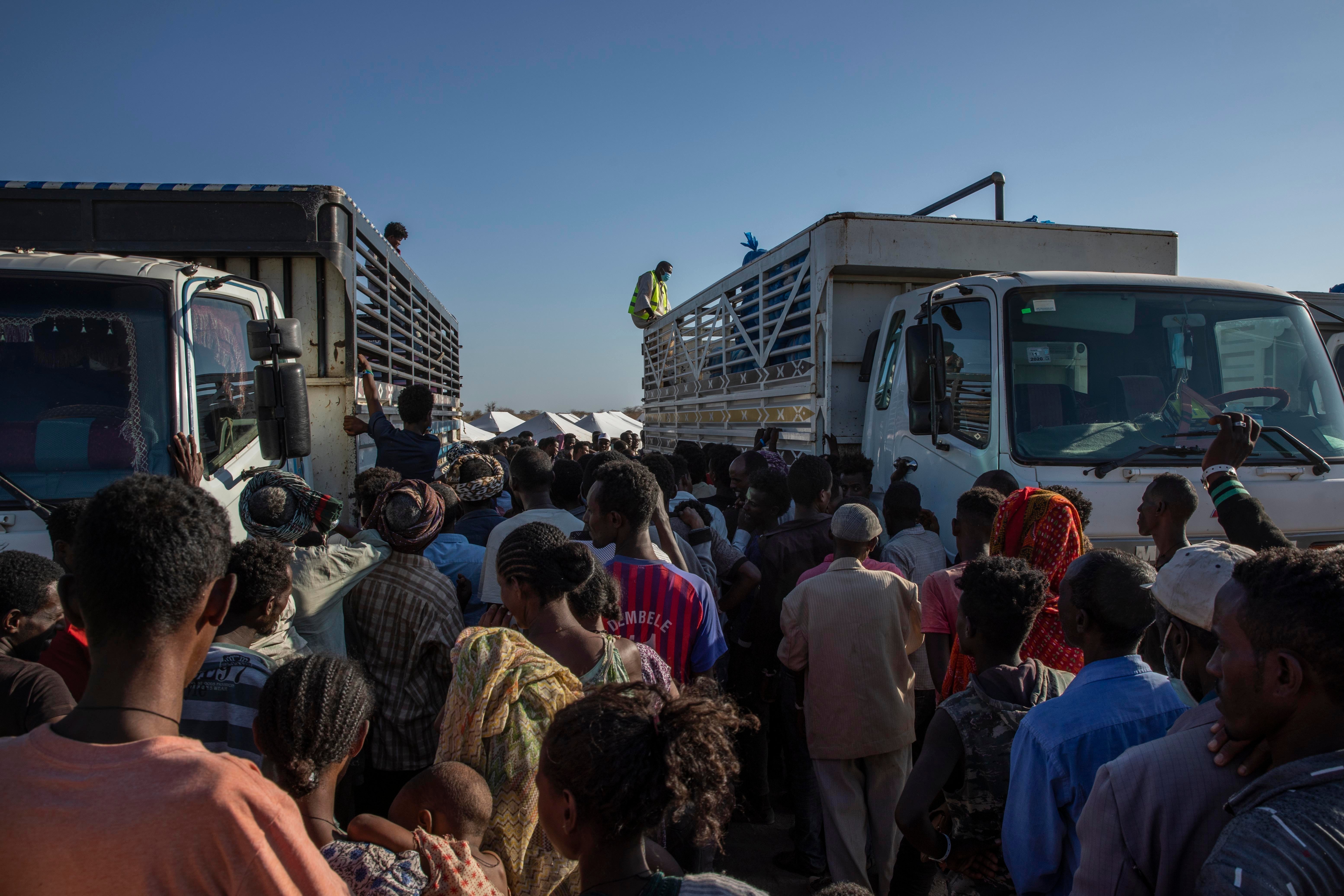Report: Hospitals in Ethiopia's Tigray struck by artillery
Many of the hospitals outside the capital of Ethiopia’s conflict-hit Tigray region were struck by artillery during the two months of recent fighting

Your support helps us to tell the story
From reproductive rights to climate change to Big Tech, The Independent is on the ground when the story is developing. Whether it's investigating the financials of Elon Musk's pro-Trump PAC or producing our latest documentary, 'The A Word', which shines a light on the American women fighting for reproductive rights, we know how important it is to parse out the facts from the messaging.
At such a critical moment in US history, we need reporters on the ground. Your donation allows us to keep sending journalists to speak to both sides of the story.
The Independent is trusted by Americans across the entire political spectrum. And unlike many other quality news outlets, we choose not to lock Americans out of our reporting and analysis with paywalls. We believe quality journalism should be available to everyone, paid for by those who can afford it.
Your support makes all the difference.Many of the hospitals in Ethiopia’s conflict-hit Tigray region, outside its capital, have been struck by artillery during the two months of fighting, according to the first humanitarian assessment of the devastation as aid begins to arrive with desperately needed supplies.
The scale of the damage has been largely unknown while Ethiopian forces pursue and clash with those of the now-fugitive Tigray regional leaders with the involvement of troops from neighboring Eritrea. Transportation and communications links were severed. More than 50,000 people have fled to Sudan, some telling The Associated Press of mass abductions, torture and killings along ethnic lines.
The United Nations and rights groups have long emphasized that intentional attacks on hospitals are war crimes. The assessment does not say who fired at hospitals; the U.N. humanitarian agency said it did not have confirmation of such details.
Tigray leaders dominated Ethiopia’s government for nearly three decades before Prime Minister Abiy Ahmed came to power and sidelined them amid sweeping reforms that won him the 2019 Nobel Peace Prize. Abiy has rejected international “interference” in the conflict, which continues outside the Tigray capital, Mekele, and in other areas.
The full humanitarian assessment, seen by the AP was prepared by a joint mission of Ethiopia’s government, U.N. agencies and aid groups that visited the Mekele and communities in southern Tigray in late December after weeks of pleading by the U.N. and others for access.
Food, medical supplies and other basics have run alarmingly low across the region. The assessment cites regional authorities as saying more than 4.5 million people, more than two-thirds of the population, need humanitarian assistance.
“The little food stock the affected communities had have either been looted, burned, or damaged,” the assessment says, adding that a locust outbreak has worsened the situation. “Living conditions for both recently displaced people and host communities remain very critical."
It adds: “As a result of the conflict, many houses, shops, and private stores were burned or damaged.” Schools, health centers, shops and other buildings were looted.
An even grimmer picture expected from an assessment based on a visit to western Tigray, where some of the fighting first erupted in early November.
The European Union's foreign policy chief, Josep Borrell, said Saturday that he had spoken with Ethiopia's deputy prime minister, Demeke Mekonnen, “and conveyed the EU’s alarm over the situation in Tigray. Full and unrestricted humanitarian access must be granted. This is not an EU demand — this is international law.”